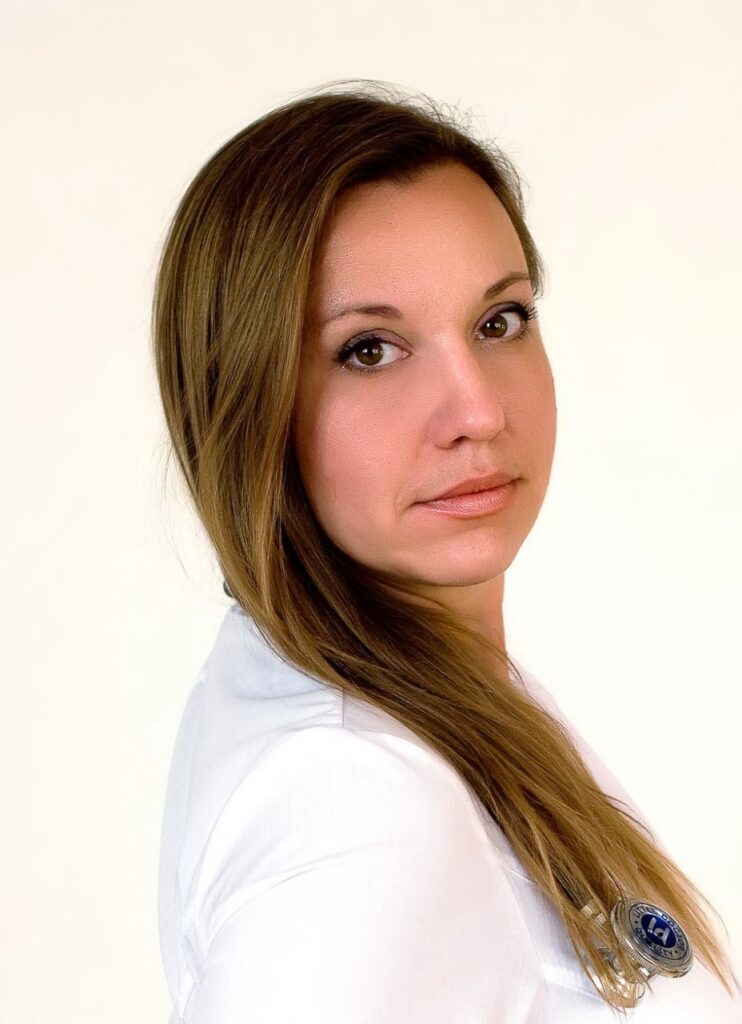
Olena Akhramieieva
Instructor of the Ukrainian Federation of Yoga
Supervisor of the department «Medical Yoga» in the Ukrainian Federation of Yoga
Founder and head of the Ukrainian Institute of Yoga and Yoga Therapy (UIYT)
Medical doctor, Yoga Therapist
Psychologist
The author of the book «Some medical aspects of Yoga Therapy»
The program of our classes on Classical Yoga
1. Hatha yoga, or yoga of the body (asanas, pranayama, mudras etc.) We discover and develop possibilities of our bodies.
Our practice based on the deep analysis of ancient tradition of Yoga modern science-based approach.
2. The human’s Chakra system.
Psychosomatics in Yoga. We explore relationships between the practitioner’s body and his “favorite” emotions. Study Yoga’s methods for its corrections.
3. Raja Yoga, or Yoga of emotions. Meditative practices and psychothechnics in Yoga Tradition.
We study to understand human’s emotions, senses, experience and explore its roots, learn methods of control.
4. Jnana yoga, or Yoga of thinking.
Mindfulness in Yoga. Basics of working with unproductive mental constructions.
5. Psychological Aikido as a means of working with conflict situations. Harmonization of relations with others.
Practices of successful interpersonal interaction.
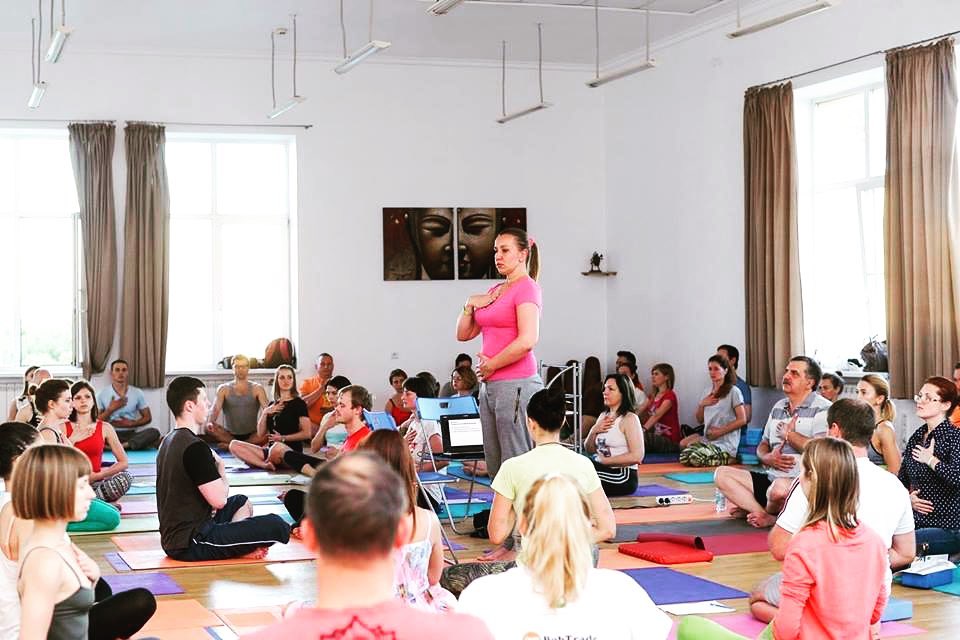
6. Techniques of actualization of true/real desires.
7. Visual psychodiagnosis – analysis of one’s psychosomatic portrait by “favorite” gestures and poses during communication; criteria of sincere energetic interaction.
8. History and philosophy of Yoga, modern branches and brands.
More about instructor
Мy biography in Yoga
I have been practicing yoga since 2001, under the guidance of my teacher Andriy Safronov.
Instructor of the Ukrainian Yoga Federation since 2004.
I have two higher educations – medical and psychological.
Founder and head of the Ukrainian Institute of Yoga and Yoga Therapy (UIYT).
Author of studies in the field of Yoga physiology, speaker at Ukrainian and international conferences. In 2023 defended my master’s thesis in the field of yoga therapy at the Kharkiv National Medical University.
Many times visited India, where I studied :
Ashtanga Yoga at Sri V. Sheshadra, Mysore;
Vini Yoga at T. K. B. Desikachar Institute;
at Jaykumar Swamyshri, Pranava Yogadhama Trust;
in the tradition of B.K.S. Ayengar;
at the Vivekanada Institute – SVYASA (Swami Vivekananda Yoga Anusandhana Samasthana), Bangalore;
in the yoga research center founded by Swam Kuvalayananda – Kaivalyadhama Yoga Institute, Lonaval;
at the Yoga Institute, founded by Sri Yogendra – The Yoga Institute, Mumbai;
in the Bihar school of yoga – Bihar school of Yoga, founded by Swami Satyananda Saraswati.
At the time, I was very interested in studying different approaches of diagnosis and treatment of diseases that exist in the Eastern tradition of medicine. In order to answer questions that were interesting for me, I studied at such institutions as:
Institute of Tibetan Medicine under the Dalai Lama (2011, Leh, Ladakh, India); Ayurvedic Health Care, Thiruvanantapuram, Kerala – training courses in Ayurvedic therapy, 2010.
Also I improved my knowledge in the clinic at Mysore University.
Completed certified courses in Su Jok therapy from its founder, Park Jae Woo (2007)
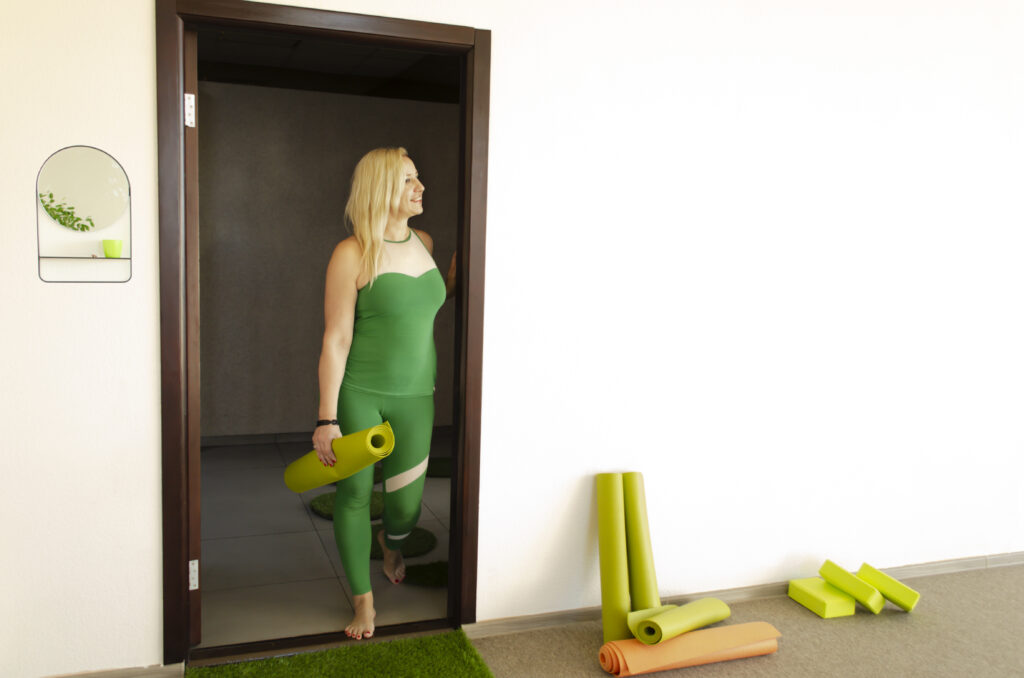
And some other things about me
With the war in Ukraine, I moved to France.
Now live in Paris.
Here I lead Yoga and Yoga Therapy groups, teach individual. Provide consultations on Yoga Therapy.
Study French.
Research in the field of Yoga and Yoga Therapy.
Besides yoga and medicine, I’m also interested in linguistics, cultural studies and philosophy.
Study Sanskrit and Latin in depth.
Adore traveling)
Since I moved to France, I travel incomparably less because of adapt ing into a new space and a new culture, which in itself is an incredible adventure. So I completely agree with the saying: «If you don’t have a Teacher, travel!» because nothing takes you beyond the “cocoon of habits” (Ahankara – in yogic terminology) like a journey.
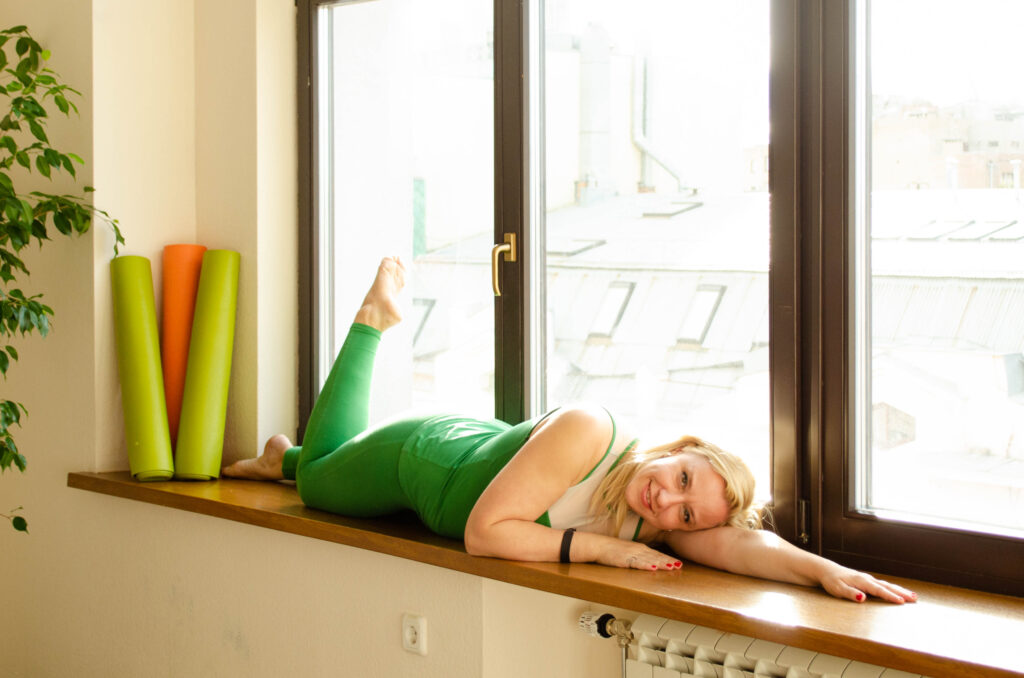
About the practice of Yoga
I came to my first Yoga class in 2001 and met my Teacher, Andriy Safronov.
* Here I have to say that on my opinion the most important thing in spiritual development is to find School and Teacher under the guidance of whom you’ll practice hereinafter. If that happened, – it’s a rare privilege and a gift to the world.
During the class, everything we did seemed extremely unusual and extraordinary: unhurried, deep work on own body in asanas; breathing in different parts of the body apart ( I was surprised by such capabilities of my body at the moment – didn’t know about them).
After the classes, there was a feeling of complexity and multidimensionality of the body. It turned out that its possibilities were not yet tested at all) And this, despite the fact that I have been involved with my body for as long as I can remember – sports, dancing, theater plastic !
It also seemed that the whole world and all the experiences in it – all these things are becoming more harmonious, structured, and at the same time – interesting, complex, diverse. The sense of a deeper Self, own Nature (Atman) was arosing.
So in the first year, I probably did not miss a single lesson and became seriously interested in Yoga.
By being practiced the understanding of the nuances arose, but I can say for certain that still discover something new for myself at each class or during the each day of practice. I am developing, because development is a non-stop process and at the same time an incredible adventure( as I suppose you’ve understood – I like adventures,)).
Developing myself, I have a great desire to share those practices and methods of Yoga that have proven to be effective with others. That invaluable knowledge, thanks to which I was able to change my life for the better. Because I really want other people, my current and future students, to touch the greatness of Yoga, to plunge into the ocean of immeasurable possibilities, which gives knowledge of oneself and the world through the methods of Yoga. I want to see people smiling, happy, aware. Keep holding the helm of his life well.
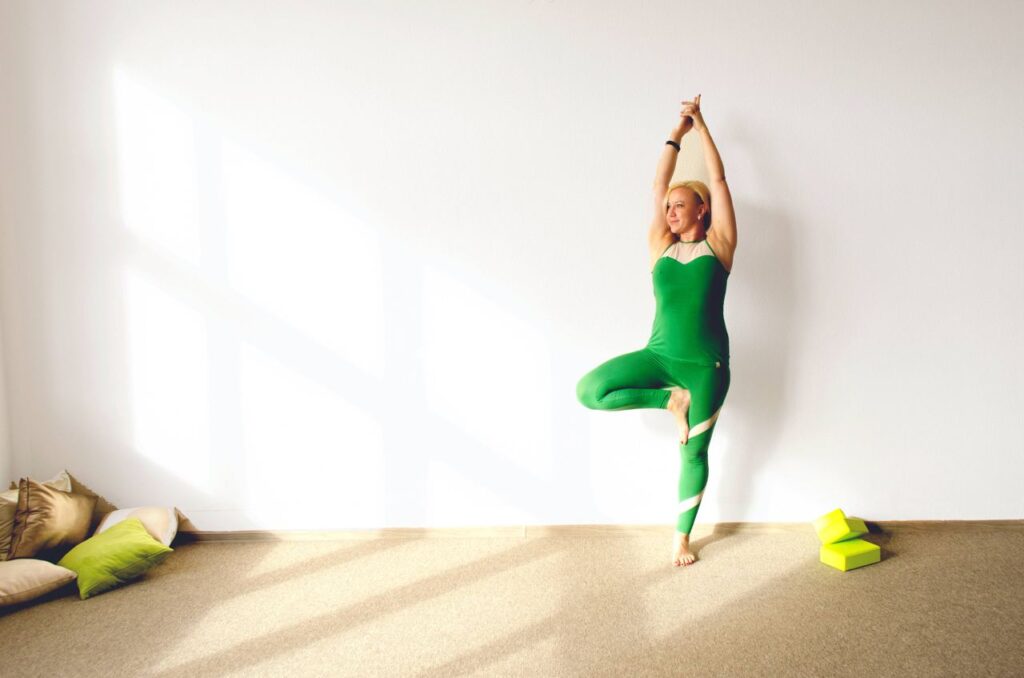
Some of my articles on Yoga Therapy
Pranayama: a Pearl in Hatha Yoga Treasure-House
In this article, one can find out how pranayama affecting the body of the practitioner. The author of the article gives u an introduction to:
⁃ Anatomy of the respiratory system;
⁃ Physiology;
⁃ Yoga, or the way it all works.
Pranayama as Meditation
Different stages of the practitioner’s response to pranayama are described:
⁃ the stage of breathing stereotypes formation and initial performance of the pranayama;
⁃ the stage of psychosomatic posture actualization;
⁃ the stage of rearrangement;
⁃ the stage of new stereotype imprinting.
Bhastrika, The Effects, and Mechanisms of Health Improvement
This article consists of three parts that cover:
⁃ Bhastrika and musculoskeletal system;
⁃ Bhastrika and apparatus of external respiration;
⁃ Practical recommendations.
Cleansing Breath in Yoga - Mechanisms, Effects, Indications
The Influence of Cleansing Breath upon the cardiovascular, respiratory, muscular, and nervous system is presented in the article.
Ujjayi (snake breathing) in Yoga therapy of Obstructive Sleep Apnea Syndrome
How shall I breathe if I snore?
Some of Ujjayi Effects, or Relaxation that Comes after Victory
Ujjayi breathing is a breathwork done in vibratory key (successive singing of sounds that compose the OM mantra) that in our School tradition is practiced almost from the very beginning.
Yoga—the Way to the Good Heart
One of Pranayama Curative Mechanisms. In this article, one will find a detailed description of the influence of pranayama upon the heart.
